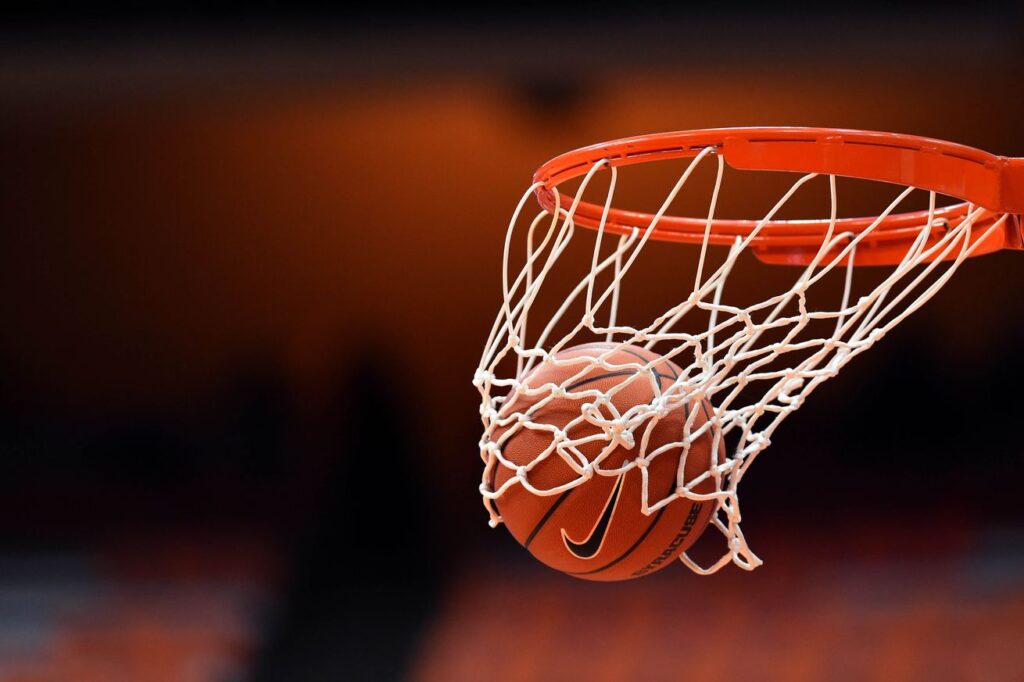
At Colvin Taluqdars' College, we are committed to promoting physical fitness, teamwork, and competitive spirit through sports. Our Basketball facility plays a vital role in developing these qualities among students. As one of the most dynamic and strategic team sports, basketball teaches students agility, coordination, leadership, and mental sharpness.
Our well-rounded basketball program caters to students at all skill levels—from beginners to those with competitive aspirations.
1. Modern Basketball Court Infrastructure
-
Indoor & Outdoor Courts: We offer both indoor and outdoor courts, ensuring students can train and play throughout the year. Indoor courts are ideal for uninterrupted sessions during adverse weather conditions, while outdoor courts provide additional flexibility for practice and recreation.
-
Premium Playing Surfaces: Our basketball courts feature high-quality, durable surfaces—wooden flooring for indoor courts and asphalt or concrete for outdoor courts—ensuring safety and performance.
-
Regulation-Size Courts: Each court follows international standards (28m x 15m), clearly marked with all game-specific zones such as the three-point arc, free throw line, and key areas.
-
Floodlights for Evening Play: We’ve equipped our courts with high-quality floodlighting to support evening practices and tournaments.
2. Expert Coaching & Training Programs
-
Professional Coaches: Our certified basketball coaches provide systematic training in core skills including shooting, dribbling, defense, passing, and footwork.
-
Strength & Conditioning: Fitness training is integrated into our basketball program, helping students build the stamina, speed, and physical strength needed for high-level performance.
-
Individual Focus: Students receive personalized guidance to sharpen specific skills, such as shooting accuracy or ball handling.
-
Game Strategy & Tactics: Our coaching includes instruction on offensive and defensive plays, game IQ, and decision-making under pressure.
3. Essential Equipment & Support Facilities
-
Top-Grade Hoops & Gear: We use adjustable, competition-level hoops and backboards, suitable for all age groups. Students have access to high-quality basketballs and training kits.
-
Uniforms & Team Kits: The college provides standard practice attire and full team uniforms for tournament representation.
-
First-Aid & Physiotherapy: Onsite first-aid facilities and physiotherapy support are available to handle sports injuries and ensure player well-being.
4. Competitions & Exposure
-
Inter-House & Inter-School Tournaments: Regularly organized to instill team spirit and expose students to real-time game scenarios.
-
District, State & National Participation: Talented students are trained and guided to represent the college in higher-level competitions.
-
Annual Basketball Festival: Our signature basketball event welcomes participation from other schools, boosting morale and competitive exposure for our players.
5. Skill Enhancement & Practice
-
Focused Drills: Routine drills target core areas like ball control, defensive stance, shooting form, and agility.
-
Game Simulation Sessions: Frequent practice matches help students apply skills in competitive settings, preparing them for tournament conditions.
-
Shooting Practice: We run targeted drills for free throws, layups, and three-point shots to improve in-game accuracy.
6. Fitness, Discipline & Well-Being
-
Cardio & Strength Workouts: Tailored training boosts cardiovascular endurance, core strength, and agility—critical for high-performance basketball.
-
Teamwork & Leadership: Students are encouraged to practice effective communication, leadership, and self-discipline—skills valuable both on and off the court.
-
Nutrition Awareness: Basic nutritional education is provided to help athletes maintain energy and recovery levels during training and games.
7. Opportunities for Student Growth
-
Talent Identification & Scholarships: We collaborate with clubs and associations to identify skilled players and help them access scholarships or advanced training.
-
Career Guidance: Students are introduced to various career paths in sports—including playing professionally, coaching, refereeing, or sports management.
-
Sports Partnerships: We maintain ties with local and regional basketball organizations, opening doors for students to participate in leagues and advanced camps.
8. Camps & Community Engagement
-
Basketball Clinics & Camps: We organize intensive camps during vacations and weekends, inviting expert coaches to train students.
-
Guest Sessions by Professionals: Inspiring talks and skill demonstrations by professional players help students gain insights into the world of professional basketball.
-
Community Events: We host friendly matches and community tournaments that engage local talent and foster a culture of inclusive sporting excellence.
9. Balancing Academics & Sports
-
Flexible Schedules: Training routines are thoughtfully aligned with academic commitments. Special provisions are made during exam periods or tournaments.
-
Academic Support: Student-athletes receive tutoring assistance if needed, to ensure academic success alongside sporting growth.
-
Life Skill Development: The discipline and leadership gained from basketball training positively influence students' overall personality and academic performance.
⭐ Why Our Basketball Program Stands Out
-
Boosts Institutional Prestige: A well-maintained basketball facility enhances Colvin Taluqdars' College’s reputation as a progressive institution with a focus on all-round student development.
-
Fosters Team Spirit: From training drills to tournament days, basketball brings students together—building friendships, resilience, and a sense of belonging.
-
Encourages Holistic Growth: Students grow in confidence, strength, leadership, and decision-making through continuous engagement in the sport.
At Colvin Taluqdars' College, our basketball facility is more than just a court—it’s a foundation for excellence, discipline, and opportunity. We invite students to explore their passion for the sport, develop their talent, and aim for greatness—both academically and athletically.
